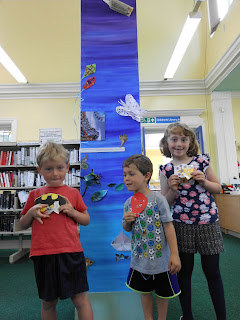...at St Annes Library, 18 – 26 July as part
of St Annes Music & Arts Festival
 |
The Boleyn Inheritance & Flowers in Vase
part of Books as Material, St Annes |
 |
Read Leaves, untitled and Legacy
part of Books as Material, St Annes |
 |
Spiders
part of Books as Material, St Annes |
[Above are a few of the items on display.]
Art Circle explored the idea of using books as
material.
We found we could use the whole book, the pages or other
parts of the book. Possible processes included;
cut-outs, folding, curling, rolling and origami. We also considered using text as a background
or subject and covers & pages as support.
Finally we thought about context; context in relationship to material,
process and location of the final pieces.
Art
Circle is a place to enable us to
develop our creativity and extend our ways of seeing. We meet at Lytham and St Annes Libraries each
week during term time. Cost is kept to a
minimum and averages at £3 per session although it may be more depending on
materials used. Contact: 01253 713553 christine.stringfellow@hotmail.co.uk
Have a go art activity...
11 - 5pm Thurs, 23 July 2015
Bright & Breezy - colourful things
that fly; from butterflies and space ships to texts and cupid's arrows.



























































